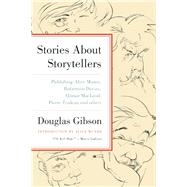
The New copy of this book will include any supplemental materials advertised. Please check the title of the book to determine if it should include any access cards, study guides, lab manuals, CDs, etc.
The Used, Rental and eBook copies of this book are not guaranteed to include any supplemental materials. Typically, only the book itself is included. This is true even if the title states it includes any access cards, study guides, lab manuals, CDs, etc.
In my experience, every humorous writer finds that his or her public confidently expects them to be a happy person, facing life with a wry chuckle, and perhaps a slow, smiling shake of the head. To his great credit, Leacock tried to shoot down this view. He wrote: “If a man has a genuine sense of humour he is apt to take a somewhat melancholy, or at least a disillusioned view of life. Humour and disillusionment are twin sisters.”
Robertson Davies (who knew more than most people about the expectations placed on successful authors in their private lives) wrote in his 1981 introduction toThe Penguin Stephen Leacock,“I have written a good deal about Leacock, and I believe that I was the first to press the point that he was not necessarily a man of continuously sunny, carefree temperament…. He had, in fact, the temperament of a humorist, and they are by no means unfailingly sunny people.”
Leacock’s life was not short of events that would have disillusioned anyone. His family (of, eventually, eleven children) came from England to rural Ontario and a life of genteel poverty (the boys were not allowed to go barefoot in the summer, like the other local kids; a matter, Leacock later said, “of caste and thistles”). The father, Peter, was a Catholic whose runaway marriage was never accepted by his wife’s Anglican family (and to make matters worse the bride was older, and may have been pregnant). Peter was excellent at provoking pregnancies, but less productive with his work on the farm near Sutton, just south of Lake Simcoe. He is politely described by the notable Leacock scholar David Staines as “a man of sluggish character.” In fact, he was so bad that Stephen and his brothers threw him out of the house (one version involves that Victorian staple, a horsewhip, and there were rumours of drunken violence in the marriage), telling him to stay away, which he did. Lack of money forced young Stephen to drop out of university for a year. For ten years he laboured as a schoolmaster, and, in the words of Robertson Davies “disliked the work heartily.”
Although he went on to enjoy great professional success and prosperity, in his marriage he lost his wife to cancer when she was forty–five, and never remarried. His beloved only son, “Little Stevie,” remained miniature, so tiny that he barely attained a height of five feet, and became an embittered drunk, his escapades hushed up by the local community. Even the teaching life Leacock loved, where in his tattered gown he could put on an Eccentric Old Professor show for his students, was taken from him when McGill briskly removed him from the faculty when he reached sixty–five — a crushing blow: “I was then retired, much against my will, on grounds of senility, having passed the age of sixty–five.” It should not have been a surprise, of course, since he had voted, many years earlier, for precisely that retirement provision.
And what a perfect Leacock funny story that would be: a middleaged professor, certain that old age will never come to him, votes for compulsory retirement at sixty–five, then reacts with outrage when it is applied to him. Leacock’s coolly classical view of human nature, in which people routinely fall prey to false hopes and small hypocrisies, believing that they are exceptions to the follies of human nature, provided him with his profitable living as a humorist. But it did not protect him here, in his own life. He did not die a happy man.
So what remains? In Montreal there is, of course, the Leacock Building at McGill, and the portrait in the University Club. Margaret MacMillan’s excellent 2009 short biography (Stephen Leacock,in Penguin’s Extraordinary Canadians series) notes that in Toronto there is a Scarborough high school named after him, which was attended by young people arrested as accused Islamic terrorists in 2006: a stranger–than–fiction example of how the old Victorian imperialist’s conservative Canada has changed.
By way of contrast, there is the Stephen Leacock Museum at Old Brewery Bay in Orillia. Built in 1927 from his book royalties as the world’s most popular humorist, it is a fine example of a rich Canadian’s lakeside cottage. It was Leacock’s base for fishing and sailing and other summer pursuits, which included paying proper respect to the site’s convivial name. But it was also a research base, though his excursions into Orillia as a famous but unaffected local writer did not have the desired effect. The town barber once complained about the summer visitor’s shameless use of hot local gossip as material for his writing. The complaint predictably ran along the lines of “How the hell was I to know that he was going to take that stuff and …”
Time has healed these wounds, and the Leacock Museum has become a tourist asset. Despite the spread of nearby houses (a scandal worth a Leacock story), the house itself is protected by its site on a point on Lake Couchiching, in tree–shaded grounds. The building is preserved as an old–fashioned cottage, with dark wood panelling throughout its interior, and comes complete with a library, straw hats on pegs, and ancient tennis racquets apparently ready for service. As you tiptoe through the two–storey house, upstairs and downstairs, peering at book titles, or at the papers on the desk in the study, or at the dishes in the kitchen, it’s hard to avoid the Goldilocks sense that the owners will return at any moment.